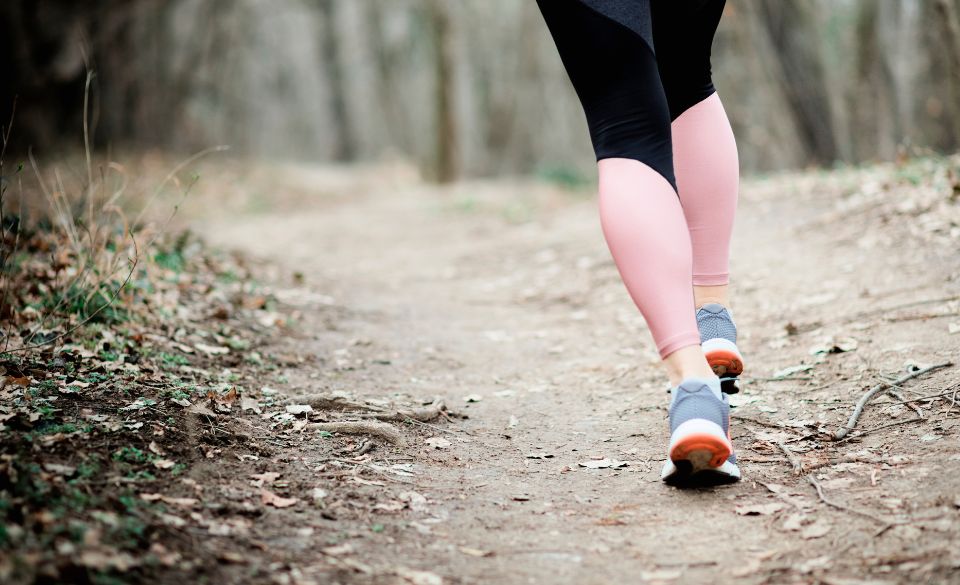
How Running Surface Can Affect You
Page Contents
As runners, we often focus on our training plans, gear, and nutrition, but one crucial factor that sometimes goes overlooked is the running surface. The type of surface you run on can significantly impact your running experience, performance, and even your risk of injury. From soft trails to hard pavement, each surface offers unique benefits and challenges. Let’s delve into the different running surfaces and how they can affect you.
The Impact of Running Surfaces on Your Body
The impact of running surfaces on your body cannot be underestimated. The type of surface you run on can have significant implications for your joints, muscles, and overall running performance. Let’s take a closer look at how different running surfaces can affect you:
1. Hard Pavement
Running on hard surfaces like roads and concrete sidewalks can be tough on your joints. The unyielding nature of these surfaces means that there is minimal shock absorption when your foot strikes the ground. As a result, your knees, ankles, and hips bear the brunt of the impact with each step. Over time, this repetitive stress can lead to discomfort, pain, and even injuries, especially for runners who are prone to joint issues. While hard pavement is often convenient and accessible, excessive road running may increase the risk of overuse injuries.
2. Soft Trails
In contrast, running on soft surfaces like trails with natural terrain can be much gentler on your body. The soft and forgiving ground, such as dirt or grass, absorbs more impact, reducing the strain on your joints. This can be particularly beneficial for runners with a history of joint pain or injuries. Trail running also engages different muscles due to the uneven surface, providing a more balanced and comprehensive workout. Additionally, the connection with nature and the scenic surroundings can make trail runs a more enjoyable and immersive experience.
3. Treadmills
Treadmill running offers a controlled and cushioned surface, making it a popular option for indoor workouts. The cushioned belt of the treadmill provides more shock absorption than hard pavements, reducing the impact on your joints. However, treadmill running lacks the variability and challenges of outdoor surfaces. The lack of wind resistance and natural terrain can lead to a different running biomechanics compared to outdoor running. It’s essential to adjust the incline and speed appropriately to simulate outdoor conditions and prevent overstriding.
Scientific Studies on Running Surfaces
Several scientific studies have investigated the effects of running surfaces on the body, particularly concerning injury risk and biomechanics. A study published in the Journal of Sports Sciences compared impact forces during running on different surfaces. The researchers found that running on softer surfaces, such as grass and synthetic tracks, resulted in lower impact forces compared to running on harder surfaces like asphalt. Lower impact forces can reduce the risk of overuse injuries and stress fractures, making softer surfaces a favorable option for injury-prone runners.
Another study published in the Journal of Orthopaedic & Sports Physical Therapy explored the influence of running surfaces on lower extremity muscle activity. The researchers found that running on softer surfaces activated more muscles in the lower extremities, indicating a more balanced and comprehensive workout. In contrast, running on harder surfaces required less muscle activation, potentially leading to muscle imbalances and increased injury risk.
Scientific Studies on Running Surfaces
Scientific studies have extensively explored the effects of running surfaces on the body, biomechanics, and injury risk. These studies provide valuable insights into how different surfaces can impact runners. Let’s delve into some of the key findings from these research studies:
1. Impact Forces and Injury Risk
A study published in the Journal of Sports Sciences compared the impact forces experienced during running on different surfaces. The researchers found that running on softer surfaces, such as grass and synthetic tracks, resulted in lower impact forces compared to running on harder surfaces like asphalt. Lower impact forces can reduce the risk of overuse injuries and stress fractures, making softer surfaces a favorable option for injury-prone runners.
2. Lower Extremity Muscle Activity
Another study published in the Journal of Orthopaedic & Sports Physical Therapy explored the influence of running surfaces on lower extremity muscle activity. The researchers found that running on softer surfaces activated more muscles in the lower extremities, indicating a more balanced and comprehensive workout. In contrast, running on harder surfaces required less muscle activation, potentially leading to muscle imbalances and increased injury risk.
3. Joint Stress and Running Economy
A study published in the European Journal of Applied Physiology investigated the impact of running surfaces on joint stress and running economy. The researchers found that running on softer surfaces led to reduced joint stress and improved running economy compared to running on harder surfaces. This suggests that softer surfaces may be more conducive to efficient running and could be beneficial for long-distance runners seeking to optimize their performance.
4. Biomechanical Differences
Research published in the Journal of Science and Medicine in Sport compared the biomechanics of running on different surfaces. The study found that runners exhibited different stride patterns and muscle activation when running on softer surfaces compared to harder surfaces. These biomechanical differences could have implications for injury risk and performance when transitioning between different running surfaces.
5. Shoe Cushioning and Impact Absorption
Studies have also explored the role of shoe cushioning in mitigating the impact of different running surfaces. A review published in the Journal of Sports Science & Medicine highlighted that shoes with increased cushioning can reduce the impact forces on the body, particularly on hard surfaces like concrete. Proper shoe selection and adequate cushioning can be essential for protecting the joints and reducing the risk of injury on harder running surfaces.
6. Psychological Aspects
Aside from the physical effects, running surfaces can also influence the psychological aspects of running. A study published in the Journal of Sports Sciences examined the psychological responses of runners to different surfaces. The researchers found that runners reported higher levels of enjoyment and motivation when running on softer surfaces, such as grass and trails, compared to harder surfaces like roads and concrete. The scenic and natural environment of softer surfaces contributed to a more positive and fulfilling running experience.
The Mental and Emotional Impact
Beyond the physical effects, running surfaces can also influence your mental and emotional well-being. Running on soft trails amidst nature can be a refreshing and stress-relieving experience. The tranquil environment and the sense of adventure can boost your mood and create a deeper connection with your surroundings. On the other hand, running on hard surfaces like busy city streets might lead to a more monotonous and less enjoyable experience.
Furthermore, the variability of running surfaces can add excitement and challenge to your training. Transitioning between different surfaces can help prevent repetitive strain injuries and keep your workouts interesting. Introducing variety in your training routine can also break through plateaus and improve your overall performance.
Tips for Managing Different Running Surfaces
Managing different running surfaces is essential to optimize your running experience and reduce the risk of injuries. Each surface presents unique challenges and benefits, so it’s crucial to adjust your approach accordingly. Here are some tips to help you navigate different running surfaces:
1. Mix It Up:
Incorporate a variety of running surfaces into your training routine. Balancing road runs with trail runs and track sessions can engage different muscle groups and reduce the risk of overuse injuries. The variability in running surfaces can also keep your workouts interesting and prevent boredom.
2. Invest in Proper Footwear:
Choose running shoes that match the surface you predominantly run on. Shoes with more cushioning are ideal for pavement and hard surfaces, as they provide better shock absorption. On the other hand, trail shoes offer better traction and support on uneven terrains. Having the right footwear can improve your comfort and performance on different surfaces.
3. Listen to Your Body:
Pay attention to how your body responds to different surfaces. If you notice persistent pain or discomfort on a specific surface, consider adjusting your training to reduce the strain on that area. Avoid pushing through pain, as it could lead to more serious injuries in the long run.
4. Be Cautious of Transitions:
If you’re not accustomed to running on a particular surface, ease into it gradually. Sudden transitions to a new surface can put extra stress on your muscles and joints, increasing the risk of injury. Start with shorter runs and gradually build up the distance and intensity.
5. Adapt Your Running Technique:
Adjust your running technique based on the surface you’re on. For instance, running on soft trails may require shorter strides and more focus on stability to navigate uneven terrain. On hard pavements, maintain a steady and consistent stride to reduce the impact on your joints.
6. Warm-Up and Cool Down:
Regardless of the running surface, always warm up before your run and cool down afterward. Warm-up exercises prepare your muscles and joints for the demands of running, while cooling down helps prevent stiffness and aids in recovery.
7. Take Advantage of Nature:
If possible, embrace the benefits of trail running by exploring scenic routes in parks or nature reserves. The connection with nature can make your runs more enjoyable and fulfilling, providing a mental boost to your training.
8. Alternate Between Shoes:
Consider alternating between different pairs of running shoes based on the surfaces you run on. This can help prolong the life of your shoes and ensure that you have the right support and cushioning for each type of terrain.
9. Stretch and Strengthen:
Incorporate stretching and strength training exercises into your routine to improve flexibility and build supportive muscles. Strengthening your core and leg muscles can enhance your stability and reduce the risk of injuries on various running surfaces.
10. Adapt Your Pace:
Be mindful of your pace when transitioning between surfaces. Running on softer surfaces like trails may require a slower pace due to the uneven terrain. On harder surfaces like roads, you may be able to maintain a faster pace with less effort.
By following these tips and being mindful of the different running surfaces you encounter, you can optimize your training, reduce the risk of injuries, and enjoy a well-rounded and rewarding running experience.
In conclusion, running surface plays a vital role in your overall running experience and can significantly impact your body, mind, and performance. Being mindful of the surface you choose, incorporating variety in your training, and listening to your body can help you optimize your running journey. Whether you prefer the excitement of urban pavements or the serenity of soft trails, understanding how running surfaces affect you allows you to make informed decisions and enjoy the most rewarding and injury-free runs possible.



